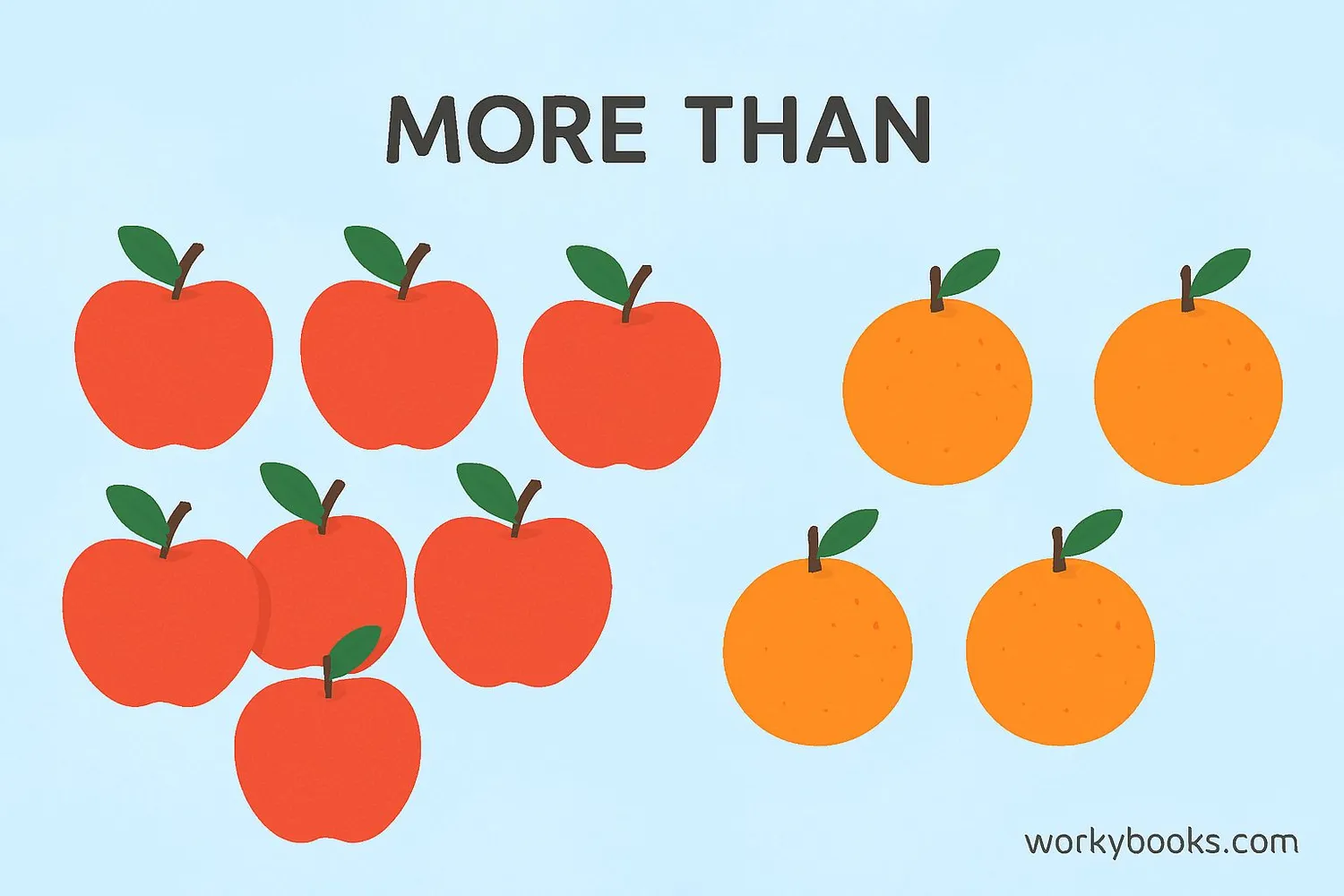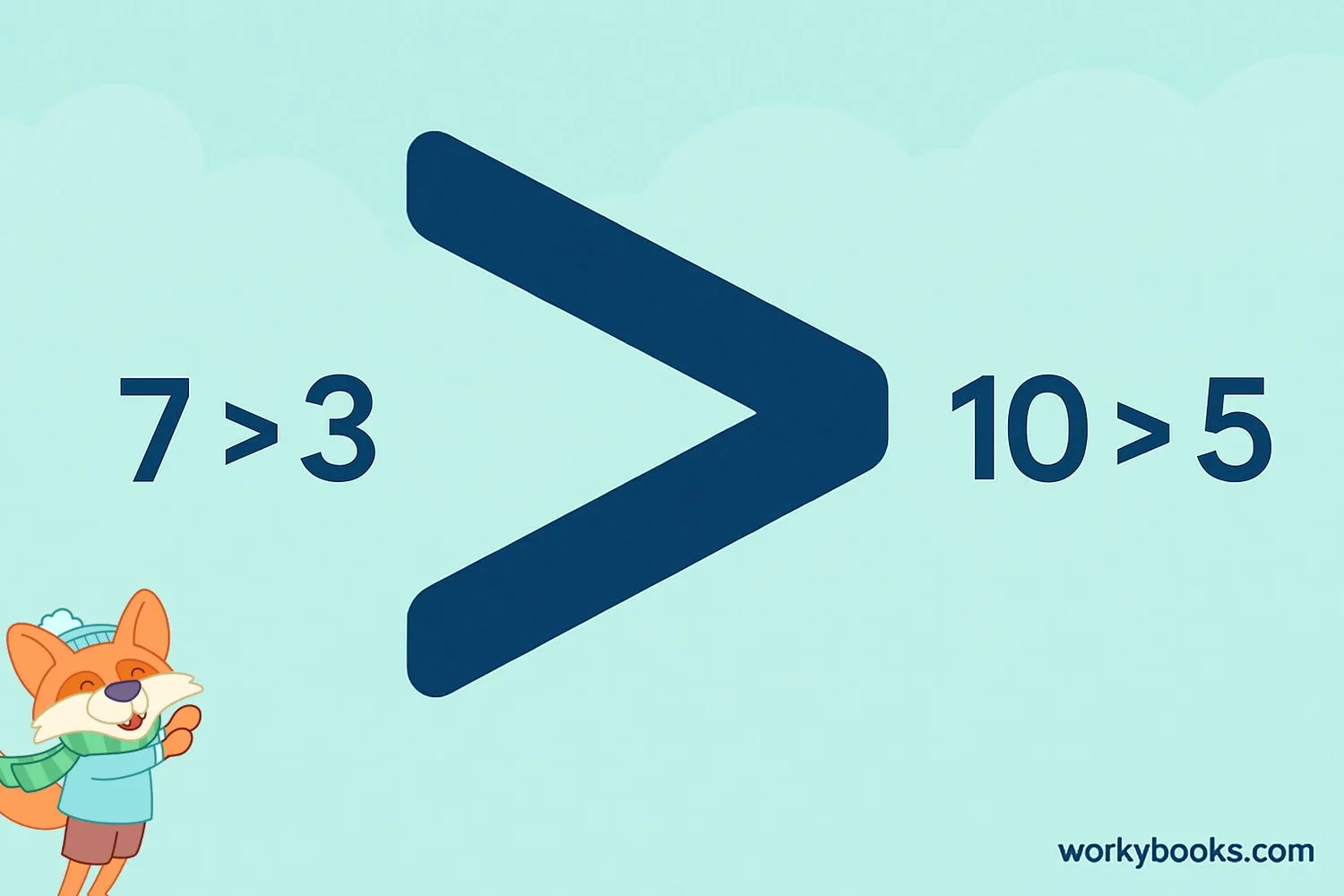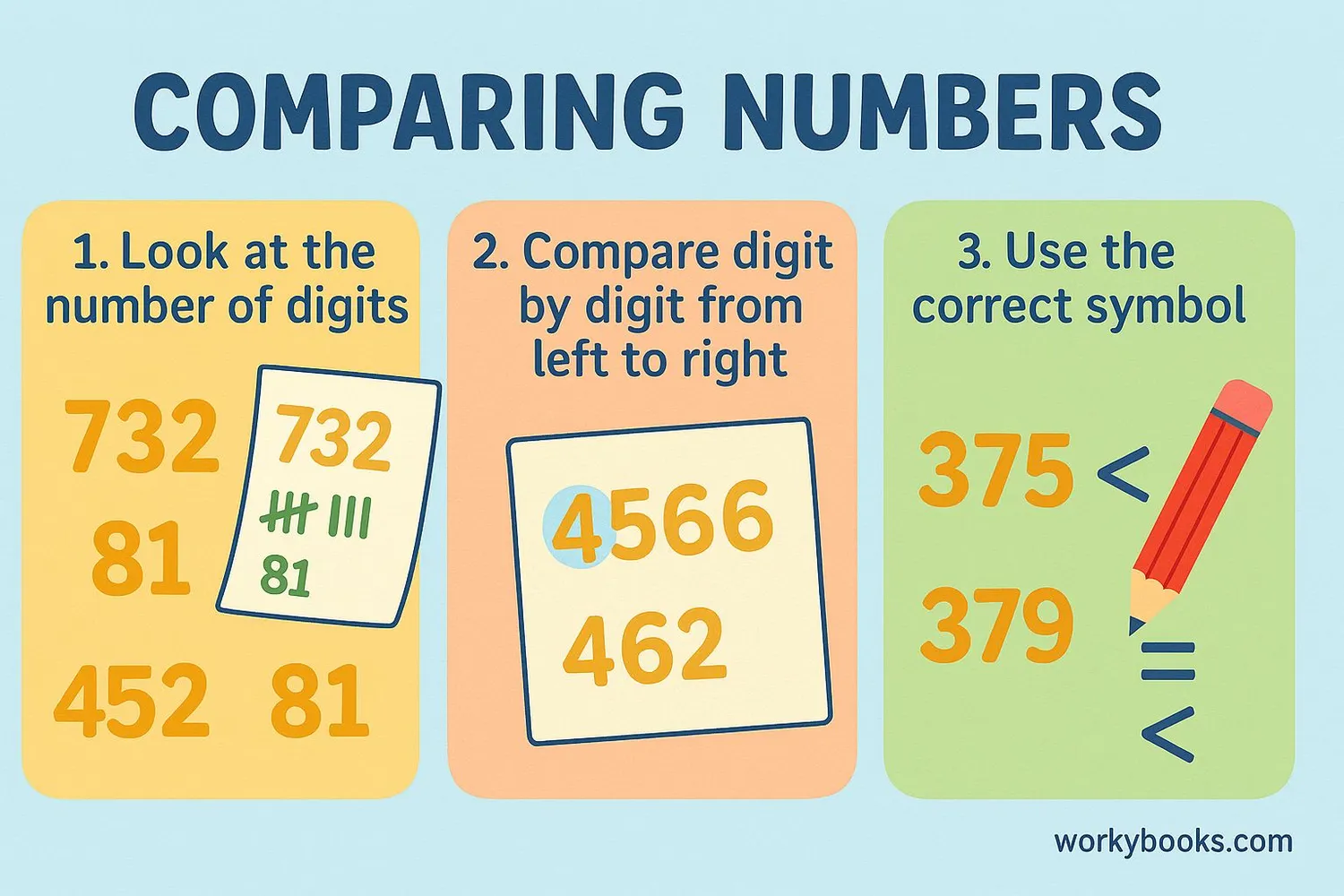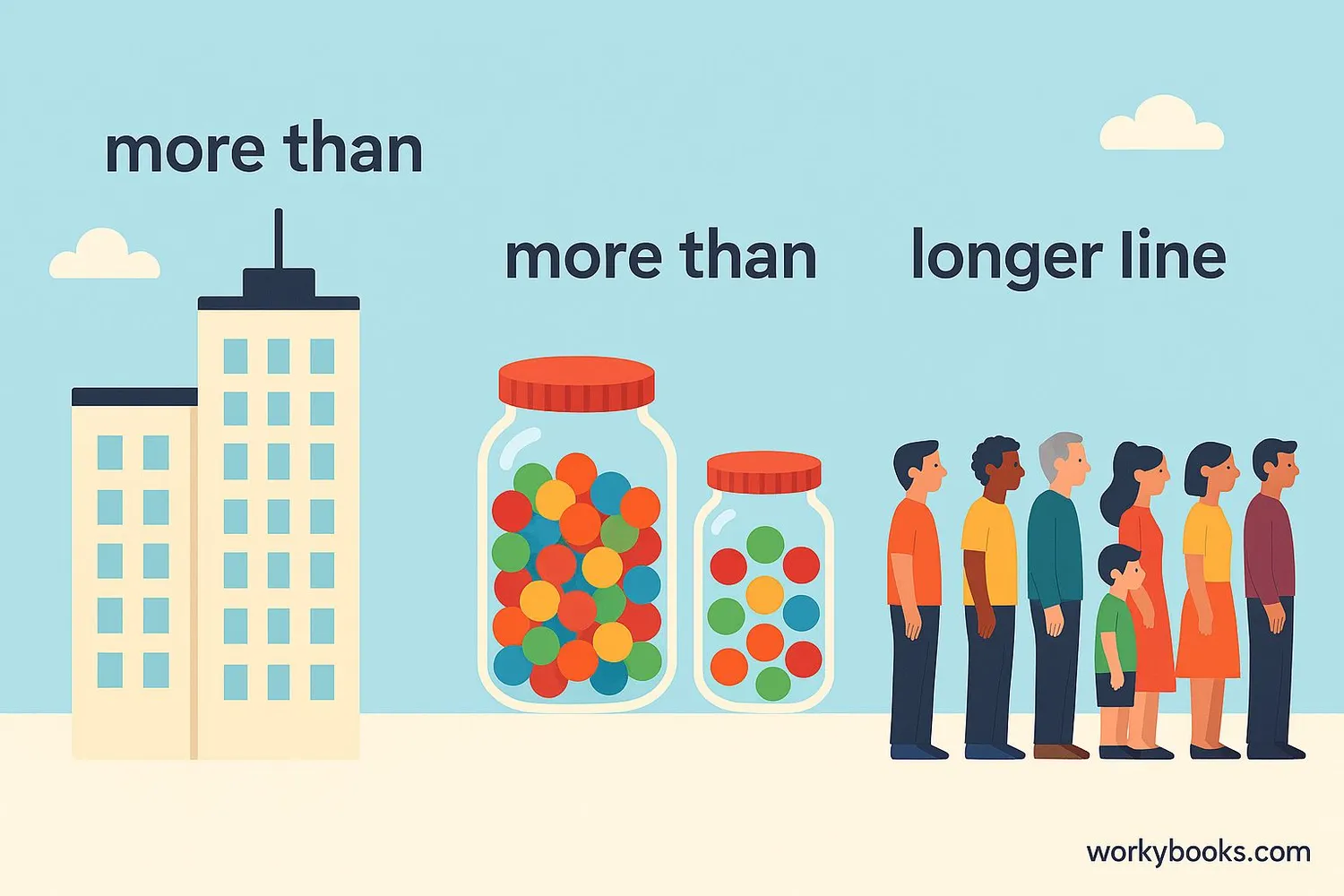More Than - Definition, Examples, Quiz, FAQ, Trivia
Learn about comparing numbers and the 'more than' concept with visual examples and practice activities
What is More Than?

In mathematics, "more than" means a greater amount or value. When we say one quantity is more than another, we mean it has a higher number or greater value.
For example, if you have 5 marbles and your friend has 3 marbles, you have more marbles than your friend. We can write this as: 5 > 3.
Understanding "more than" helps us compare numbers, quantities, and measurements. It's one of the basic building blocks of mathematics that we use in everyday life.
Apples
Oranges
Key Concept
"More than" means having a greater amount or value. We use the > symbol to show this relationship between numbers.
The More Than Symbol

The mathematical symbol for "more than" is >. This is called the "greater than" symbol.
Greater Than Symbol
The wider part of the symbol always faces the larger number, and the pointed part faces the smaller number.
Example: 8 > 4 is read as "8 is greater than 4" or "8 is more than 4".
The symbol points to the smaller number, showing that the number on the left is larger than the number on the right.
Remember
The greater than symbol (>) always points to the smaller number, like an alligator's mouth ready to eat the bigger number!
Comparing Numbers

Comparing numbers helps us determine which is larger or smaller. Here's how to compare numbers:
Step 1: Look at the number of digits. Numbers with more digits are always larger.
Example: 350 (3 digits) is more than 45 (2 digits)
Step 2: If numbers have the same number of digits, compare digit by digit from left to right.
Example: Compare 67 and 64. Both have 2 digits. Compare the tens place: both have 6. Compare the ones place: 7 > 4, so 67 > 64.
Step 3: Use the correct symbol to show the relationship.
Example: 125 > 119 (because 125 has a larger tens digit: 2 > 1)
Comparison Examples
| Comparison | How to Read It | Why It's True |
|---|---|---|
| 15 > 9 | 15 is greater than 9 | 15 has more digits |
| 32 > 29 | 32 is greater than 29 | Tens digit: 3 > 2 |
| 107 > 98 | 107 is greater than 98 | 107 has more digits |
| 64 > 62 | 64 is greater than 62 | Ones digit: 4 > 2 |
Comparison Tip
When numbers have the same number of digits, start comparing from the leftmost digit until you find a difference.
Real-World Examples

We use "more than" comparisons in many real-life situations:
Example 1: Sarah has 8 stickers. David has 5 stickers. Who has more stickers?
Solution: 8 > 5, so Sarah has more stickers.
Example 2: The blue rope is 25 feet long. The red rope is 18 feet long. Which rope is longer?
Solution: 25 > 18, so the blue rope is longer.
Example 3: Class 3A has 32 students. Class 3B has 28 students. Which class has more students?
Solution: 32 > 28, so Class 3A has more students.
Example 4: A basketball costs $15. A tennis ball costs $3. Which costs more?
Solution: 15 > 3, so the basketball costs more.
Look around you - you can find examples of "more than" everywhere!
Real-World Tip
We use "more than" comparisons when talking about height, weight, price, age, and many other measurements!
Comparison Practice Quiz
Test your understanding with this 5-question quiz. Choose the correct answer for each question.
Frequently Asked Questions
Here are answers to common questions about the "more than" concept:
Math Comparison Trivia
Discover interesting facts about mathematical comparisons:
Historical Symbols
The greater than (>) and less than (<) symbols were invented by British mathematician Thomas Harriot in 1631. Before that, people wrote out "is greater than" in words.
Comparing Large Numbers
When comparing very large numbers, mathematicians sometimes use special notation like scientific notation. For example, 3.6×10⁵ > 2.1×10⁵ even though both have 6 digits.
Animal Comparisons
Some animals understand the concept of "more than"! Research shows that crows, chimpanzees, and even salamanders can choose containers with more food items.
Large Number Names
Mathematicians have names for extremely large numbers. A googol is 10100 (1 followed by 100 zeros), and a googolplex is even larger: 10googol!





